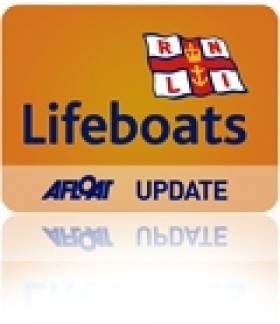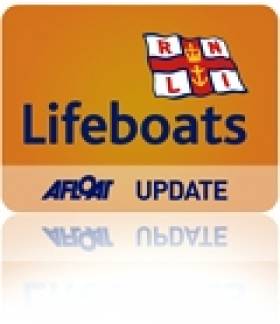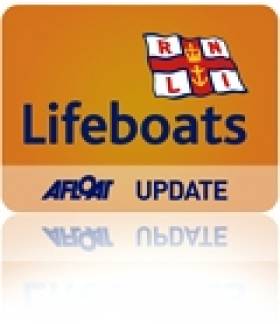Displaying items by tag: Jetskiing
Wicklow Lifeboat Rescues Jetskier After Engine Cuts Out
#RNLI - Wicklow RNLI's inshore lifeboat launched at 2.25pm yesterday afternoon (Friday 3 July) to assist a jetskier north of the harbour.
The jetskier had set off from Wicklow and was about a half mile offshore when the engine cut out, leaving him adrift and unable to get ashore.
Within minutes of launching, the lifeboat reached the casualty, who was then taken on board with his jetski in tow back to Wicklow Harbour.
The inshore crew on this callout were helm Dave O'Leary, Lisa O'Leary and Carol Flahive.
Baltimore Lifeboat Launches To Overturned Jetski
#RNLI - Bundoran RNLI launched to an overturned jetski on Saturday afternoon (2 August).
Just after 4pm, the volunteer lifeboat crew was paged by Malin Head Coast Guard to four people in the water off Murvagh Beach following the capsize of their jetski.
In overcast conditions, the lifeboat William Henry Liddington launched within six minutes of the initial request and made their way across Donegal Bay to the scene on the Rossnowlagh side of Murvagh.
The Sligo-based Irish Coast Guard helicopter Rescue 118 also launched to the scene.
Upon arrival, the RNLI crew found that the family of four from Northern Ireland had made their way safely to shore. A member of the crew went ashore to ensure that the family were okay.
"Thankfully the family were wearing lifejackets, otherwise this could have been a much more serious situation," said Bundoran RNLI helm Brian Gillespie.
"We would remind sea and water users to always wear a lifejacket when heading for the water and as always if a member of the public sees someone in danger on the water to call 999 or 112 and ask for the coastguard."
First Outing for Skerries RNLI's New Lifeboat
#RNLI - Skerries RNLI recorded its first service by its new inshore lifeboat on Sunday afternoon (21 April). SEE VIDEO BELOW
The North Co Dublin lifeboat station's volunteer crew was requested to launch following a report that a vessel was adrift off Bettystown beach.
Crew members, alerted by their pagers, launched their new Atlantic 85 lifeboat Louis Simson within 10 minutes.
It was quickly established that the owner of the vessel was on shore. With the potential for the personal water craft (PWC) to pose a danger, the decision was made to locate it and return it to the beach.
Once on scene, a volunteer crew member was put on board the PWC and brought the vessel safely to shore.
Speaking following the callout, Skerries RNLI volunteer crew member Emma Wilson said: "The visibility was good today, but it was something quite small we were looking for, so being able to have an extra crew member on board our new lifeboat really made a difference during the search."
Kawasaki Issues Recall for JT1500 Jetski
#JETSKI - Kawasaki has issued a recall for their Personal Watercraft Model JT1500 after the discovery of an assembly flaw that could lead to accidents on the water.
On eligible units of Jet Ski STX-15F, Ultra 260X/LX, Ultra LX and Ultra 300X/LX models, the guide pipe may have been detached from the outer steering cable during assembly. This can cause the steering to become obstructed, creating the potential for an accident.
All units within the ranges listed are eligible for repair, including unofficial imports. Full model and identification details of units for markets other than Europe are included in Marine Notice No 16 of 2012, which is available to read or download as a PDF HERE.



























































